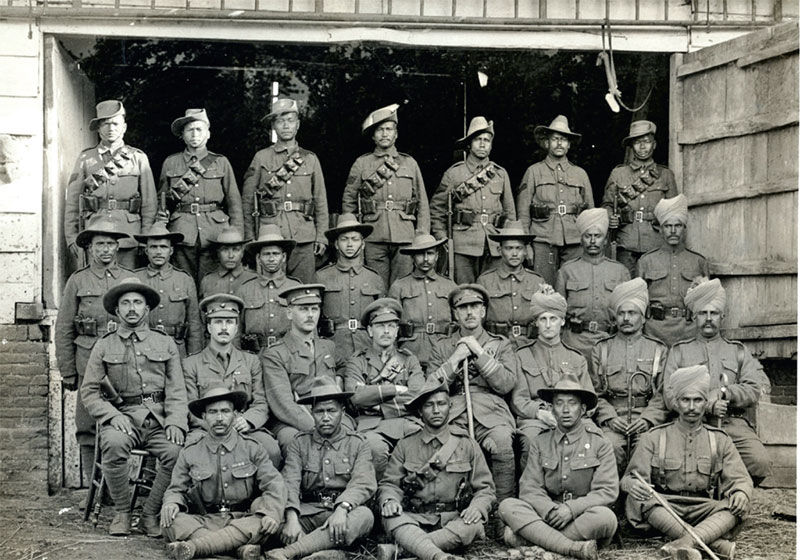Unhappy with the Agnipath scheme, Gurkhas are joining the Russian Army
Mohammad Asif Khan
Former Chief of the Indian Army, late Field Marshal Sam Manekshaw once famously remarked, “If a man says he is not afraid of dying, he is either lying or is a Gurkha”, lauding the valour and courage of India’s elite fighting force, the Gurkha Regiment, comprised of soldiers from ethnic Gurkha communities of India and Nepal.

However, the Gurkha Regiment of the Indian Army has seen no recruits for over four years, leading many Nepali young men to seek opportunities elsewhere. Recent reports indicate that approximately 15,000 Nepalese men have joined the Russian military to participate in the ongoing conflict in Ukraine, with an estimated 19 Nepali casualties on the frontlines fighting for the Russian army.
Some of these Nepali men were enticed to Russia under the guise of a better life, only to find themselves thrust into the Ukrainian conflict instead. Despite the Nepali government’s claim that around 200 of its citizens are serving in the Russian Army, with at least 13 reported deaths in conflict zones, opposition figures and human rights advocates argue that these official figures significantly underestimate the actual numbers.
Prominent Nepali lawmaker and former foreign minister Bimala Rai Paudyal revealed in a parliamentary session that between 14,000 and 15,000 Nepalis are actively engaged on the frontlines based on accounts from returning individuals, urging Russian authorities to disclose accurate statistics.
In response, the Nepali government has issued a ban on its citizens traveling to Russia for employment and imposed stricter regulations for those intending to visit countries like the United Arab Emirates on tourist visas, as many citizens depart for countries like Russia and Ukraine from the Gulf. In December, Nepal's foreign ministry called on Russia to cease recruiting Nepali nationals and repatriate the bodies of those killed in conflict zones.
Expressing deep concerns, Nepali foreign minister N.P. Saud conveyed to CNN during an interview at his Kathmandu office, “We are deeply concerned that Russia has enlisted our citizens and deployed them to war-torn areas in precarious circumstances.” The minister revealed that Russia’s deputy foreign minister had provided assurances the previous month, stating that ‘they will address’ Nepal’s concerns, yet conceded that Moscow has yet to take any concrete actions.
Shared Heritage
The integration of Gurkhas into the British Indian Army traces back to the Anglo-Nepalese War (1814-16), where the British, impressed by the Gurkhas’ fighting spirit, began recruiting them after the Treaty of Sugauli in 1816. Gurkha soldiers, known for their spirited battle cry ‘Jai Mahakali, Aayo Gurkhali,’ rallied their comrades with fervour during attacks, wielding their distinctive khukhris with determination.
This legacy persisted after India’s independence in 1947, formalised by a tripartite agreement between Nepal, India and the United Kingdom. Since independence, Gurkhas have participated in every major campaign involving the Indian Army, earning numerous battle and theatre honours, including the Param Vir Chakra and the Maha Vir Chakra. Their contributions span from World Wars I and II to the Kargil War of 1999, and they are revered for their loyalty, discipline and exceptional combat skills, holding a place of pride in both Indian and Nepali military traditions.
Currently, there are 39 units of Gurkha Rifles in seven regiments, with 38 units composed of 60 per cent Nepal-domiciled Gurkhas (NDGs) and 40 per cent India-domiciled Gurkhas (IDGs). Only one unit in the entire Indian Army consists of 100 per cent IDG. However, now with Nepalese not joining under the Agniveer scheme, Indian Army, in November 2020, cleared recruitment of men from the hill districts of Himachal and Uttarakhand into the Gurkha Regiment.
Gurkha youth have been eager to join the Indian Army due to its superior perks and payments compared to the Nepali Army. In terms of numbers, Nepal-based Gurkhas in the Indian Army total approximately 32,000, with a significant portion of their salaries remitted to Nepal through the Nepal State Bank and Everest Bank. Moreover, around 1,30,000 Indian Army veterans reside in Nepal and India, with an annual pension allocation of approximately INR 2,800 crores being transferred to them in Nepal.
The Agnipath Scheme
The Agnipath scheme, introduced by the Indian government in June 2022, presents a new recruitment model for the Indian Armed Forces. This programme offers four-year contracts to soldiers below officer rank, with only 25 per cent being retained for permanent positions after their service term. The remaining 75 per cent are discharged without pension benefits, receiving a lump sum payment of INRs 13 lakhs instead.
This shift from a long-term career path with pensions to a shorter-term contract system has generated significant discontent among aspirants from India and triggered widespread protest, and also among Nepali aspiring Gurkhas. Disillusioned with the Agnipath scheme, many Nepali youths are now looking beyond the Indian Army for military opportunities.
“The Indian Army offers them a life after service. A full career in the Indian Army is highly respected and well regarded in Nepal,” says Maj. Gen. Ashok K Mehta, a retired officer from the Gurkha Regiment. “One of the reasons why they joined the Russian army is because of this Agnipath scheme and the Nepal government’s refusal to accept the terms of engagement for Agnipath,” he adds.
You must be logged in to view this content.

